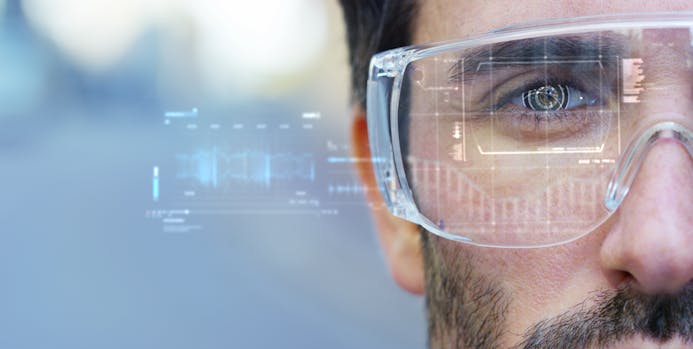Predictive maintenance: Fixing problems before they happen
2020-07-14
2 min read
In the film Minority Report, the foreknowledge of three psychics is used to predict crimes and apprehend the future offenders, stopping the crimes before they occur. Predictive maintenance strategies are not too dissimilar to this, in that they stop problems before they arise, saving both time and money for the company.
AR technology overlays digital content and information, such as statistics and graphics, onto the real world, in real-time, using a display piece or eyeglasses. Essentially, it adds digital information to the existing real-world environment to create the augmented environment.
However, AR technology offers more than just the ability to present digital content such as characters and images. For example, looking at a furnace through a set of AR glasses allows factory workers to see information like its current operating temperature at a glance. Using AR technology in this way has the potential to dramatically improve a manufacturer’s predictive maintenance strategies, which in turn improves performance, productivity and overall product quality.
Predictive maintenance
The maintenance of a large, complex factory floor can be a daunting, costly and time-consuming task. Nevertheless, it is a task that is vital for the factory to operate efficiently and with minimal disruptions to production.
The average impact of unplanned machine downtime in the process industries alone is roughly $20 billion per year, which is around five per cent of annual production. This is attributed to lost sales, machine start-up costs, parts replacement, idle labour and other factors. Not only that, but unplanned downtime can also lead to lasting equipment damage, environmental harm and the endangerment of workers.

It is estimated that unplanned machine downtime costs up to 10 times more than planned downtime for maintenance purposes. By gathering machine data over time and combining this with historical data and a vigilant condition monitoring policy, facility managers can accurately foresee, and plan for, any upcoming downtime. It is a realistic ambition for companies employing an efficient predictive maintenance programme to have nearly zero unplanned downtime.
Applying AR technology
Infrared thermography is an AR-based technology that allows workers to view electrical systems, mechanical equipment, building applications and fluid systems using thermal vision. Engineers can use it to spot faulty connections, abnormal motors, pipe temperatures and tank levels without having to physically touch the equipment, lowering the risk involved.
GE Aviation has successfully implemented AR into its maintenance strategy using its Skylight industrial AR software platform. This allows mechanics to receive step-by-step instructions and images directly within their line of sight through a pair of smart glasses, leading to an 8–11 per cent reduction in the time taken to carry out maintenance tasks.
Using AR in this way also allows manufacturers to employ a streamlined predictive maintenance programme. By providing visualisations of potential points of failure within the system, workers can see at a glance if there is a problem and, crucially, identify which parts are at fault. Replacement parts can then be ordered from an industrial parts supplier without the need for costly unplanned downtime.
In Minority Report, using foresight to predict and prevent crimes before they occur proved to be flawed way of operating, with the potential to do more harm than good. There are no such concerns with predictive maintenance, it offers a risk-free way of saving time and money by preventing unplanned machine downtime.



